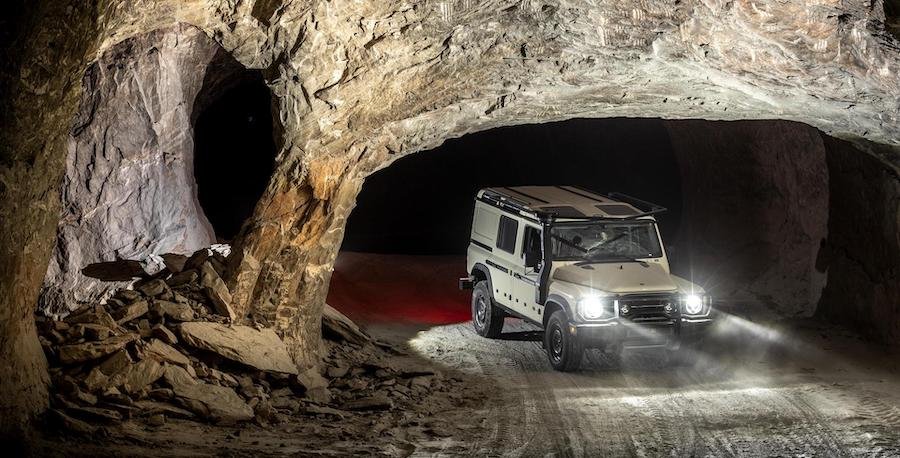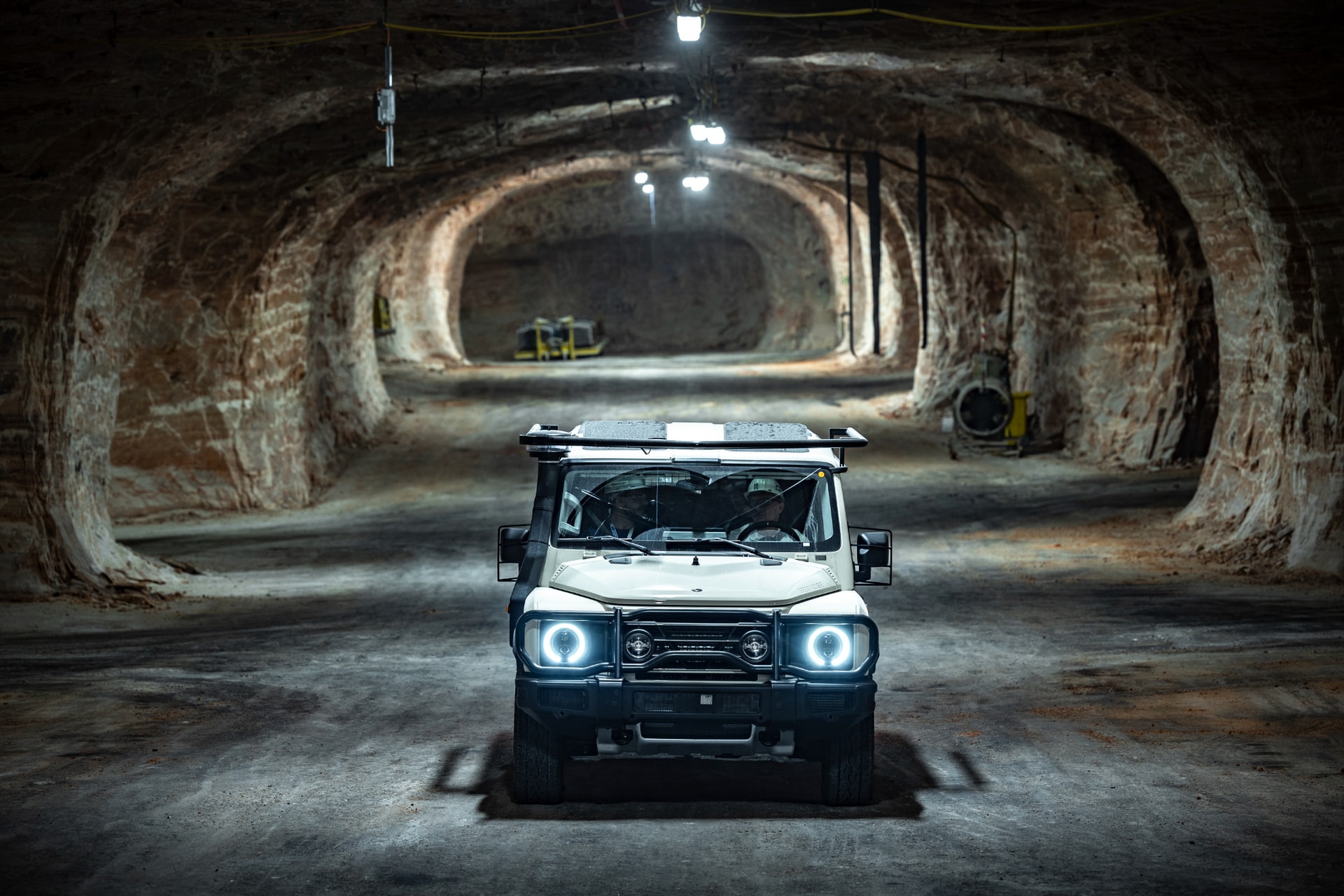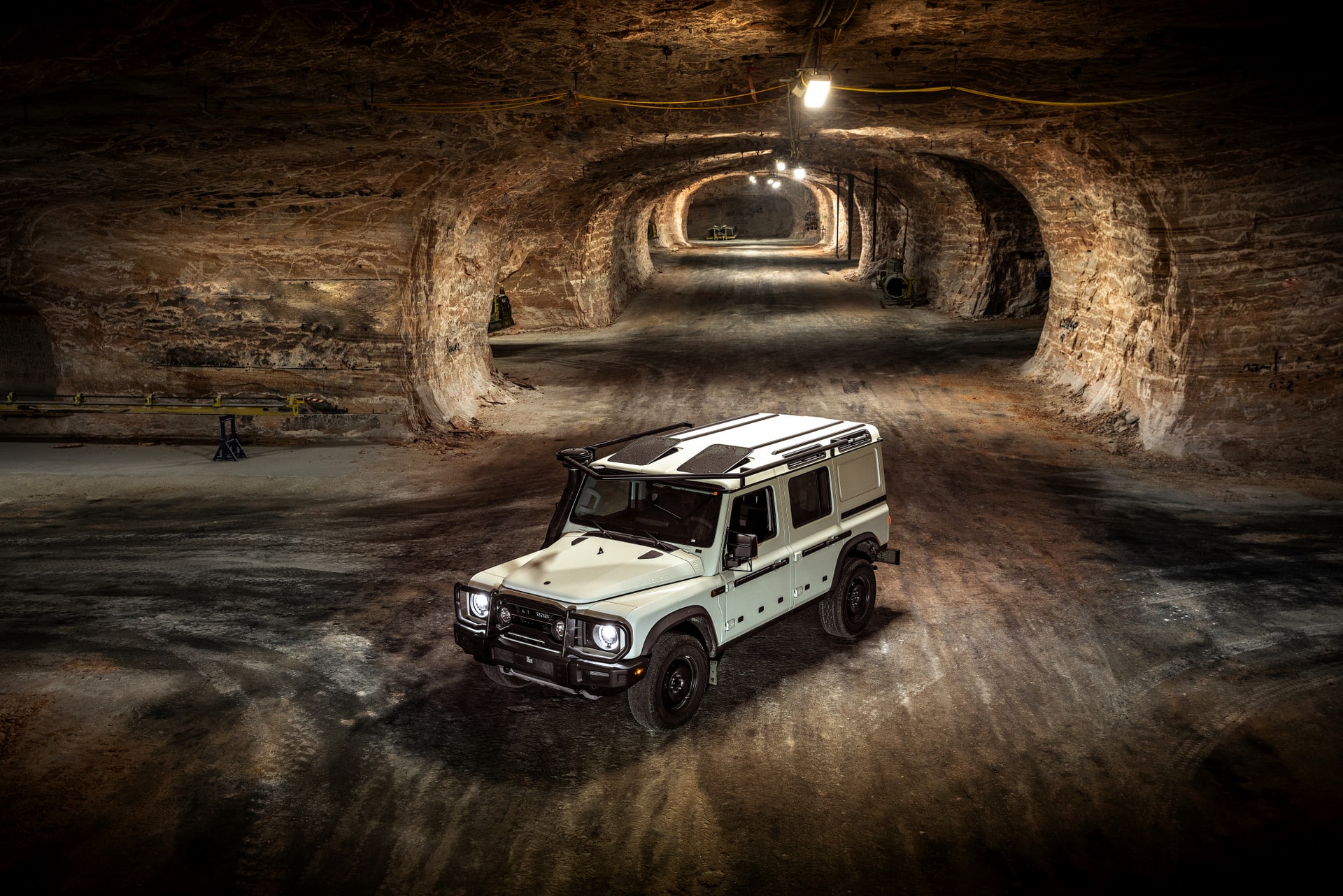How Low Can You Go? A 3,000-ft-Deep Mine Is the Best Test Field for the Ineos Grenadier

Granted, it has history on its side—electric cars were a thing before internal combustion took over as the driving force of civilization.
Now that I think about it, EVs are the only automobiles to venture beyond the boundaries of this world and into the Cosmos. Three EVs made it to the Moon with Apollo 15, 16, and 17, and let’s not forget that there’s a Tesla boldly drifting in zero gravity, roaming toward where no man has gone before (probably still looking for a heavenly Supercharger or the solution to extended range, lightweight batteries, and real ecological progress).
But there is one particular environment that cars don’t freely venture into. It’s not water, and it’s not air, either – automobiles were swimming a long time ago, and flying cars are inching toward becoming the norm. The answer lies right beneath your feet – and in your food if you’re munching on something while scrolling through this text. And there is one carmaker that sent its only model to hell – metaphorically speaking (if we abide by the school of thought that says Satan’s permanent residence is buried deep underground).
Namely, Ineos has dispatched a Grenadier some 3,000 feet (some 900 meters and change) below ground just because the surface wasn’t a challenge for the off-roader anymore. The spiritual successor of the famous Land Rover (the good one, not the beauty-queen current iteration) has a new playground – a potash mine in Germany.
Right. I know there are absolutely zero chances that one day, someone in his or her right compression ratio will walk into a dealership and say, ‘Hi, I’d like an under-road car.’ Whatever rugged off-road vehicles will become, I’m positive the industry will not spend one dime researching how to improve the car’s ability to drive through an active mine.
Nonetheless, Ineos don’t want to run with the herd, so they got one of their 4x4s deep below ground just to test it against the corrosive salts in the mine. The mine in which the Grenadier decided to have a fun adventure extracts potassium and magnesium.
Potassium chloride is a main ingredient for artificial fertilizers. It’s also very prone to eating through a car’s metallic body, making it the perfect foe for the Ineos Grenadier’s corrosion-protective treatments, complete electrocoating, wax sealing, and powder coating.
The company doesn’t say what powerplant pushes the miner through the salty tunnels. Still, there are only two options to pick from - a three-liter gasoline engine or a three-liter diesel. Both run undersquare inline-six architectures (82 x 94.6 mm / 3.22 x 3.72 inches for the gas engine, 84 x 90 mm / 3.30 x 3.54 inches for the other).
The twenty-four-valve, single-turbo B58 BMW straight-six powerplant puts out 281 hp (286 PS) and 332 lb-ft (450 Nm) through an eight-speed automatic with manual override, a 2.5:1 transfer case and three lockable diffs. The B57 twin-turbocharged diesel (also with four valves per cylinder) is a more modest 245-hp off-roader. It compensates with its superior torque rating of (406 lb-ft) 550 Nm. The drivetrain is identical for both motor setups.
The vehicle in the photo shoot from the German mine is a utility wagon (there is no third row of side windows), and the raised snorkel by the right A-pillar would lead us to believe it is the Trialmaster Edition. Ineos says the following about this Grenadier variant: ‘For the most extreme off-road conditions, the Grenadier Trialmaster Edition ensures there are no limits to your adventures.’ Seeing what they chose as a test field, I tend to give up my right to the proverbial pinch of salt.
The utility wagon has a ground clearance of 264 mm (10.4 inches), an approach angle of 35.5 degrees, a ramp break-over angle of 28.2 degrees, and a departure angle of 36.1 degrees. The four-wheel drive, low-range powertrain ensures 100% gradeability (meaning the Grenadier can go uphill on a 45-degree ramp without running out of breath).
Although not particularly relevant at 1,300 meters below daylight, the fording depth of the vehicle is 800 mm (31.5 inches). However, the axles' articulation (9° front, 11° rear) might come in handy at certain points when climbing over rocks and boulders.
The mine exploration is part of an extensive set of trials for the rugged overlander after completing over 1.1 million miles (1.77 million kilometers) of testing during the vehicle’s development, going through conditions like minus 35 degrees Celsius (negative 31 Fahrenheit) or altitudes above 7,600 feet (2,500 meters).
The Grenadier is a body-on-frame construction with a full box-section ladder frame chassis, heavy-duty solid beam axles, and a two-range transfer case. It can be optioned with up to three locking differentials. The center diff lock comes standard, and the front and rear are optional. However, the Trialmaster Edition comes standard with the Rough Pack, which includes the trio of locking differentials and all-terrain tires (BFGoodrich T/A KO2).


Verwandte Nachrichten
